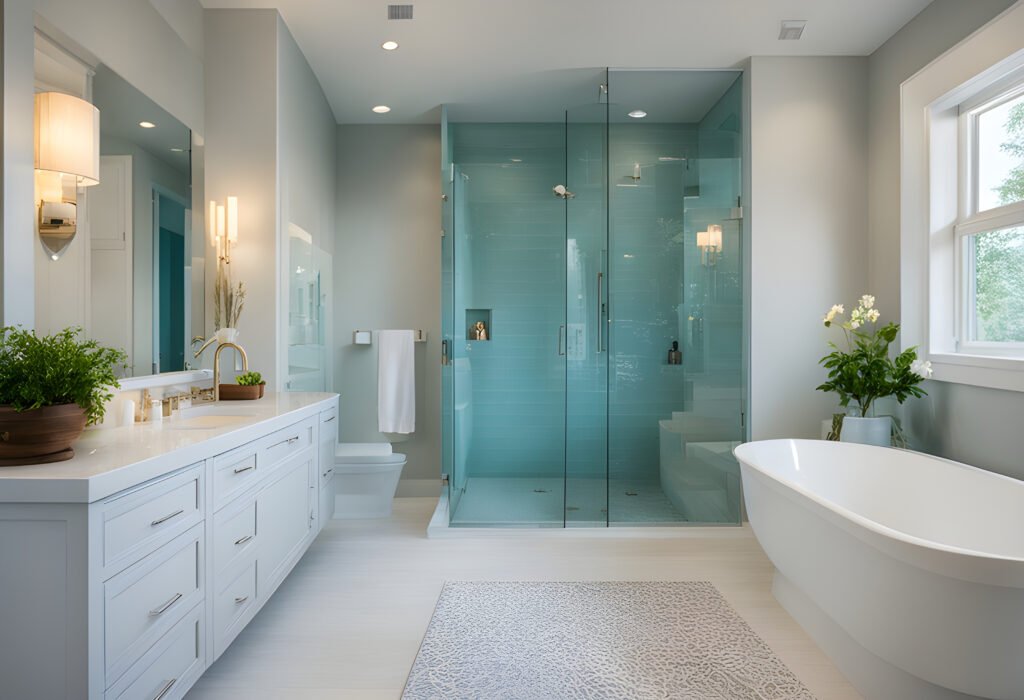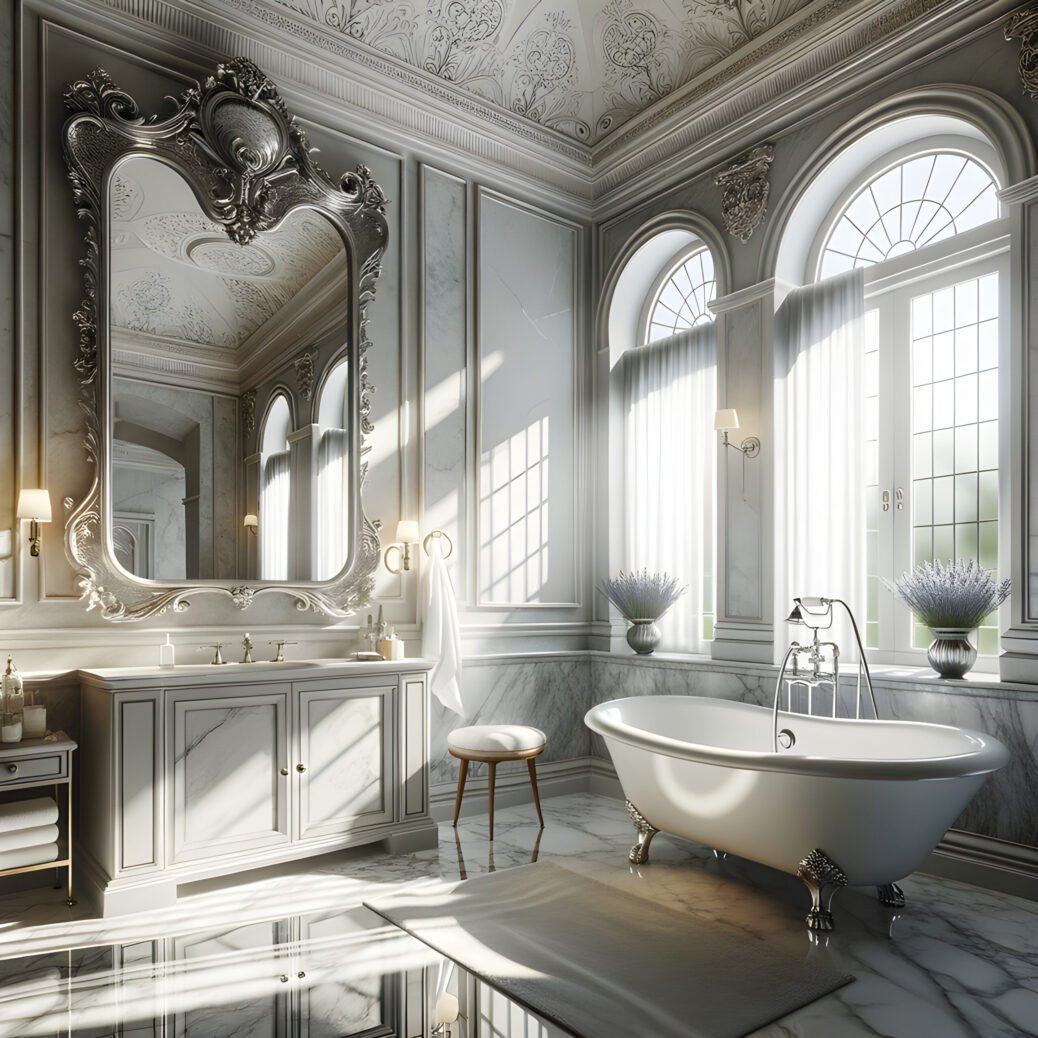A Deep Dive into the World History of Bathrooms

Introduction to Bathroom History
The history of bathrooms is not merely a chronology of facilities; it is a reflection of human civilization, culture, and advancements in hygiene practices over the centuries. From ancient cultures to modern times, the evolution of bathrooms reveals significant changes in societal values, health consciousness, and technological progress. Bathrooms have transitioned from rudimentary outdoor latrines to sophisticated spaces designed for comfort and cleanliness, marking the importance of sanitation in public and private life.
In ancient civilizations such as those of the Romans and Greeks, the concept of bathing extended beyond mere cleanliness. Public baths served as centers of social interaction, emphasizing a collective value placed on hygiene and community. These facilities showcased the advanced engineering skills of the time, including complex plumbing systems that delivered clean water and removed waste. Such innovations were indicative of a society attentive to the health and well-being of its citizens.
The evolution of restroom facilities is not confined to a single region; each culture adapted sanitation to fit its unique context. Asia’s traditional practices, including the use of bidets, and the introduction of modern plumbing in the Americas provide a diverse tapestry of bathroom history salient to understanding current sanitation norms. This overview sets the stage for exploring further into the distinct periods and their contributions to the advancement of bathroom facilities, reflecting the enduring importance of hygiene across the globe.
Ancient Civilizations and Early Sanitation
Throughout history, the evolution of bathroom practices and sanitation methods has played an essential role in the development of public health. Ancient civilizations, notably the Romans, Greeks, and Egyptians, made significant strides in bathroom innovation that not only improved hygiene but also laid the foundational principles for modern sanitation systems.
The Romans were particularly advanced in their approach to sanitation. They constructed expansive aqueduct systems that transported fresh water from distant sources directly into cities. This innovation enabled the establishment of complex plumbing systems that supplied water to residential homes, public baths, and latrines. The public latrines, often elaborately designed, featured rows of marble seats with continuous running water underneath, which facilitated waste disposal. It is worth noting that these communal spaces were social hubs where individuals engaged in conversation, reflecting a different cultural approach to sanitation.
Similarly, the ancient Greeks made remarkable contributions to public hygiene. Their use of drainage systems, such as the Kretian underground pipes, demonstrated an understanding of the importance of waste removal in maintaining public health. The Greeks also utilized bathhouses, which emphasized cleanliness and relaxation, creating environments conducive to both physical and social well-being.
In ancient Egypt, sanitation practices were surprisingly advanced for their time. The Egyptians employed a series of intricate plumbing systems for disposing of sewage, utilizing pots and channels to ensure waste was removed efficiently from homes. They placed great emphasis on cleanliness, as illustrated by their bathing rituals and the importance assigned to cleanliness in their religious beliefs.
The sanitation innovations introduced by these early civilizations—the aqueducts, public latrines, and comprehensive drainage systems—set the stage for future advancements in restroom design. Their commitment to public hygiene has significantly influenced how contemporary bathrooms are structured and understood, outlining the fundamental roles of sanitation in urban development and public health through the ages.

The Middle Ages: Decline and Resurgence
During the Middle Ages, the evolution of bathroom facilities experienced significant fluctuations, heavily influenced by the sociopolitical climate of the time. Following the fall of the Roman Empire, advanced sanitation systems began to deteriorate, leading to a decline in hygiene practices. This period, often characterized by societal upheaval, resulted in the widespread use of chamber pots, which were commonplace in most households. These portable toilets were primarily utilized indoors, where privacy was minimal, and the risk of unsanitary conditions increased.
The limitations of chamber pots necessitated the emergence of rudimentary privies or latrines, typically located outside the main living quarters. These facilities were often simple pits dug into the ground, and their upkeep was minimal, contributing to unsightly and unsanitary conditions. With the growing population density in urban centers, the lack of proper waste disposal and sanitation led to serious health problems, including the outbreak of diseases such as the plague.
However, as stability gradually returned to society towards the end of the Middle Ages, there was a notable resurgence in hygiene practices. The influence of religious institutions played a pivotal role during this time, as monasteries often adhered to stricter cleanliness standards. Innovations in public health began to emerge, leading to the construction of more sophisticated privies, which included rudimentary flushing systems towards the late Medieval period. Additionally, the idea of public bathhouses resurfaced, aligning with the growing awareness of the importance of personal hygiene.
This pendulum swing in bathroom facilities during the Middle Ages illustrates not only the impact of external factors such as disease and societal stability but also the gradual shift towards an acknowledgment of the necessity for improved sanitation. The lessons learned during this tumultuous period laid the groundwork for the advancements in hygiene practices that would follow in the Renaissance and beyond.
Renaissance to the Industrial Revolution: Advances in Plumbing
The period from the Renaissance to the Industrial Revolution marked a pivotal transformation in the realm of bathroom design and sanitation practices. During the Renaissance, an increased emphasis on hygiene and the human body invigorated the concept of personal grooming. This era witnessed the emergence of ornate public bathhouses, which offered an avenue for social interaction while promoting cleanliness. The advancements in human understanding of sanitation laid a foundational framework for significant public health improvements, highlighting the direct correlation between hygiene and overall well-being.
As society progressed into the 17th and 18th centuries, the introduction of indoor plumbing began to reshape residential bathrooms. Early plumbing systems were primarily constructed using lead or wooden pipes, signaling a notable shift from reliance on external water sources. During this period, notable figures, such as Sir John Harington, who invented one of the first flushing toilets in 1596, contributed to evolving sanitation practices. The functional evolution of toilets and bathroom facilities became intertwined with societal values concerning health and dignity.
The late 18th century heralded an increased awareness of hygiene as a public health imperative. The scientific revolution enabled advancements in understanding germs and diseases, prompting governments and health officials to advocate for improved sanitation infrastructures. The construction of sewage systems and the widespread installation of indoor plumbing in urban areas became essential for controlling health hazards. This period also saw the proliferation of ceramic tiles and fixtures in bathrooms, promoting both hygiene and aesthetic appeal. The advent of these plumbing innovations paved the way for the modern sanitation practices we often take for granted today, underscoring the evolution of bathroom design as integral to public health and societal development.
The Rise of Modern Bathrooms in the 19th and 20th Centuries
The evolution of bathrooms into modern sanctuaries can be traced through significant developments in the 19th and 20th centuries. This period marked a pivotal transition characterized by the introduction of the flush toilet, which revolutionized personal hygiene and sanitation practices. Prior to this innovation, toilets were often rudimentary, relying on basic pits or chamber pots, resulting in unsanitary conditions that posed public health risks. The flush toilet, patented in the late 18th century and gaining popularity throughout the 19th century, allowed for more efficient waste disposal and laid the groundwork for the sanitation systems we rely on today.
The emergence of private bathrooms within households also reflects changing societal expectations. The notion of personal privacy began to take precedence, with many families desiring bathrooms that provided a sense of seclusion and comfort. Advances in plumbing technology made it feasible to incorporate indoor plumbing into residential designs, leading to the development of separate bathrooms complete with sinks, bathtubs, and toilets. This architectural innovation not only transformed the layout of homes but also signaled a cultural shift towards valuing cleanliness and personal care.
In addition to the practical benefits, modern bathrooms started to be viewed as spaces of relaxation and personal retreat. The Victorian era, in particular, emphasized elaborate bathroom designs, featuring decorative tiles, ornate fixtures, and luxurious finishes. These design elements marked bathrooms as aesthetically appealing spaces rather than mere utility rooms. With the subsequent rise of the Arts and Crafts movement and other design trends in the early 20th century, bathrooms continued to evolve, reflecting broader changes in architecture and interior design principles.
As societal values shifted towards comfort, privacy, and hygiene, the modern bathroom became an essential element of domestic architecture, mirroring the advancements of its time while setting the stage for further innovations in bathroom design throughout the 20th century.

Cultural Variations in Bathroom Design
The design and functionality of bathrooms vary significantly across cultures, reflecting unique traditions, values, and practical considerations. In Japan, for instance, the bathroom is often seen as a sanctuary, with an emphasis on cleanliness and relaxation. Traditional Japanese bathrooms feature deep soaking tubs, known as “ofuro,” where individuals cleanse themselves prior to bathing. This practice emphasizes the importance of purity and serves as a meditative ritual, showcasing a cultural reverence for water.
In contrast, India presents a strikingly different approach to bathroom design, where customs and climate play a crucial role. Many households utilize “squat toilets,” which are common in rural areas, accommodating the prevailing sanitary practices. Additionally, the use of water for cleansing, often through a ‘lotah’ or small water vessel, underscores the cultural significance of purity. Western-style toilets are increasingly being incorporated into urban settings, but traditional practices continue to coexist, reflecting a blend of old and new.
Scandinavian countries, on the other hand, lean towards minimalism and functionality in their bathroom designs. Emphasizing natural materials, these spaces often feature earth tones and large windows to allow for ample natural light. The concept of “hygge,” or coziness, is prevalent in Scandinavian bathrooms, with warm elements such as heated floors and soft textiles creating a leisurely atmosphere. Environmental sustainability also plays a key role, whereby water-saving fixtures and eco-friendly products are commonly adopted in modern designs.
These cultural differences in bathroom design illustrate how sanitation and personal hygiene practices are deeply intertwined with the respective histories and social norms of each region. From Japan’s tranquil bathing rituals to India’s diverse sanitation practices and Scandinavia’s focus on sustainability, each approach offers unique insights into the multifaceted nature of bathrooms worldwide. Understanding these variations helps in appreciating the diversity of human experiences concerning one of the most essential aspects of daily life.
Environmental Impact and Sustainability in Bathrooms
The bathroom, an essential part of modern living, has significant implications for environmental sustainability. One of the foremost issues is water consumption. With bathrooms accounting for a substantial percentage of household water use, the demand for water-efficient fixtures has never been more pressing. Traditional toilets can use as much as 3.5 to 7 gallons per flush, whereas newer models, such as dual-flush toilets, can reduce this to as little as 1.1 gallons. The implementation of low-flow showerheads and faucet aerators can further minimize water usage without compromising performance. These innovations highlight a broader commitment to integrating eco-friendly solutions within bathroom design.
Additionally, effective waste management poses another critical environmental challenge associated with bathrooms. The disposal of sanitary products and non-biodegradable materials can lead to environmental degradation. Increasing awareness around these issues has led many consumers to seek out sustainable bathroom products. Items such as biodegradable toilet paper, reusable menstrual products, and organic soaps are gaining popularity, reflecting a shift towards more sustainable choices that minimize landfill contributions.
Another key aspect of modern sustainable bathroom design is the use of recycled and sustainable materials. Features such as recycled glass tiles and sustainably sourced wood contribute not only to a bathroom’s aesthetic appeal but also to its overall environmental impact. Designers are now prioritizing materials that reduce carbon footprints and promote recycling, further implementing sustainable practices in construction and renovation processes.
Incorporating plants into bathroom spaces is also emerging as a vital trend, providing natural air purification while enhancing the overall atmosphere. With a focus on sustainability, the bathroom industry is increasingly making strides towards reducing its environmental footprint, ensuring that this essential space contributes positively to our planet. As more individuals embrace these sustainable practices, the bathroom can transform from a wasteful environment into a model of ecological responsibility.
Technological Innovations in Bathrooms
Throughout history, technology has played a crucial role in revolutionizing bathroom design and functions. From simple plumbing systems to sophisticated smart devices, the evolution of the bathroom has been marked by significant advancements that enhance comfort, convenience, and cleanliness. One of the most notable innovations is the introduction of smart toilets. These modern fixtures often come equipped with features such as automatic seat open/close, heated seats, and self-cleaning mechanisms, all of which contribute to an elevated user experience.
Another remarkable advancement is the heated floor system. This innovation not only ensures warmth during colder months but also significantly improves comfort for users. Heated floors utilize electric wires or water-based systems to create a consistent and pleasant temperature. As a result, this technology has become increasingly popular in residential bathrooms, as it effectively transforms the overall ambiance while providing practical benefits.
Bidets have also gained traction in modern bathroom design. Initially popular in European countries, these fixtures promote personal hygiene by offering a gentle and effective cleaning mechanism. Modern bidets come with various features, including adjustable water pressure, temperature control, and even air dryers. The rise of the bidet reflects a shift towards improved hygiene practices and a growing awareness of personal care.
Digital shower systems are another innovative element in contemporary bathrooms. With customizable settings that allow users to control water temperature, flow rate, and even integrated lighting, these systems add a touch of luxury to daily routines. Digital controls, often enabled through smartphones or tablets, provide an effortlessly user-friendly approach, ensuring convenience and ease of use.
In conclusion, the integration of technology into bathroom design has significantly influenced comfort, convenience, and hygiene standards. Each innovation, from smart toilets to digital shower systems, marks a step forward in reimagining how we utilize these essential spaces in our lives.
The Future of Bathrooms: Trends and Predictions
The landscape of bathroom design is continuously evolving, with a noticeable shift toward minimalism, wellness, and technological integration. As modern life becomes increasingly bustling, the trend for minimalist design in bathrooms is gaining momentum. Homeowners are gravitating towards sleek lines and uncluttered spaces that evoke tranquility. This aesthetic not only promotes a sense of calm but also enhances functionality, making each element purposeful and essential.
In conjunction with minimalist design, there is a growing emphasis on creating wellness-oriented spaces within bathrooms. These areas are being transformed into sanctuaries that promote mental and physical well-being. Features such as freestanding soaking tubs, spa-inspired showers, and natural materials are becoming commonplace. Additionally, the inclusion of aromatherapy, mood lighting, and chromotherapy is becoming integral in designing a holistic bathroom experience that prioritizes self-care and relaxation.
Moreover, advancements in technology are set to redefine bathrooms as we know them. The integration of Artificial Intelligence (AI) and the Internet of Things (IoT) will provide unprecedented convenience and control. Smart showers that allow for temperature personalization, AI-driven mirrors that display weather or news updates, and automated lighting systems that adjust based on time of day are just a few examples of how technology is reshaping these spaces. These innovations not only enhance the user experience but also contribute to sustainability efforts through water-saving fixtures and energy-efficient appliances.
As social dynamics continue to evolve, the bathrooms of tomorrow will likely reflect changing priorities. The focus will shift from mere utility to creating spaces that support well-being, sustainability, and immersive experiences. This evolution highlights the importance of thoughtful design that responds to contemporary needs while anticipating future demands. Ultimately, the convergence of style, wellness, and technology will carve a new definition for modern bathrooms, promising an intriguing future ahead.

